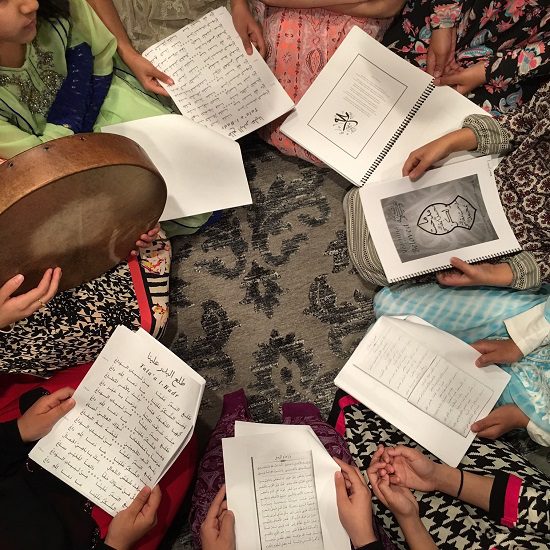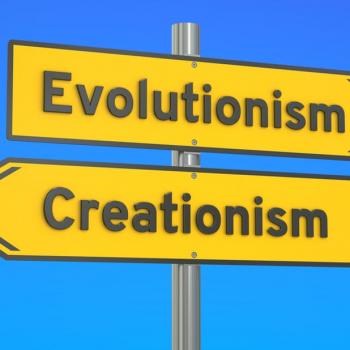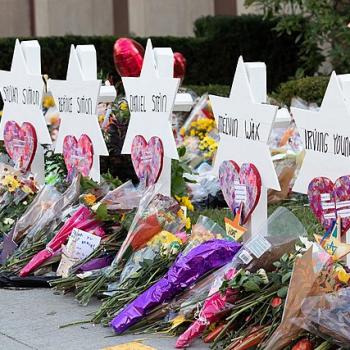 |
|
How will they be defined?
|
A master narrative based on the fundamental conviction that Islam, and therefore Muslims, are inherently, uniquely and irremediably violent has once again gained an alarmingly broad acceptance among Americans. That narrative, recently highlighted in the “Ground Zero mosque” controversy, is the belief that Islam and Muslims are once again trying to engineer a symbolic supersession over Christendom by building on someone else’s hallowed ground.
Those who want their constituents to be outraged that Islam is up to its old tricks – this time on American soil – point to medieval Cordoba (the center is to be called Cordoba House), Spain as a historic example of Muslims “turning a cathedral into one of the world’s biggest mosques.” This completely discounts a wide range of historical and cultural evidence to the contrary that would offer more rational perspective about Islam and Muslims and debunk the perception that the religion of one fifth of humanity constitutes a monolithic threat to the remainder.
First of all, the historical reality is that such architectural appropriation is an age-old feature of dueling sacred spaces. Christians, Muslims, Hindus and others have regularly made such symbolic statements of their political ascendancies. In the sweep of history, the real estate of worship sites has regularly changed hands, back and forth, thousands of times across the world. When Christian armies claimed Latin America for Catholicism, the missionaries in attendance regularly proclaimed that local cathedrals and churches would henceforth stand atop hundreds of pre-Columbian pyramid-temples.
Yes, indeed, when Muslims conquered southern Spain, they built a mosque where there had once stood an Arian Visigothic church, which in turn had been built on the ruins of a Roman temple. And by the early 16th century, that mosque had sprouted a cathedral, complete with flying buttresses. Around 1500, Muslim conquerors of northern India erected a mosque on a site claimed by Hindus as the birthplace of the deity Rama. Then in 1992, Hindu mobs descended on that nearly 500-year-old mosque and dismantled it stone by stone – nearly a century and a half after the last Muslim ruler had disappeared from the scene at the hands of the British (who, by the way, treated their Hindu subjects far more brutally than the earlier Muslim overlords had).
The history of Muslim inculturation in the USA has often witnessed a much more peaceful and not at all triumphalistic exchange: many early mosques did indeed nestle into buildings originally designed as churches, but only when abandoned storefronts were not readily available, and when the local Christian communities were no longer interested in using them further for their own purposes and thus “deconsecrated” them. A Muslim prayer space near Ground Zero does not take over the space of another tradition; it makes its own contribution to this sacred landscape.
But perhaps the single most insidious and misleading notion in the mix is that a monolithic entity called “Islam” represents a serious threat to the “free” world. This increasingly widespread view arises from a failure to appreciate a number of important features of both present-day and historic ways in which Islam has taken shape in and impacted scores of cultural contexts. Popular misconceptions virtually always presuppose that “It” and “They” are a solid, massive ingot of hatred and intolerance that needs only to be superheated to advance inexorably across the globe like magma from a raging volcano, engulfing the planet in response to Allah’s Will. Here are several aspects of the reality of global and local Islam that offer genuine perspective.
Over the course of nearly 1400 years, scores of Muslim-led political regimes dotted the map from Morocco to Malaysia and from Albania to Zanzibar. Though the common misperception would have us believe that Islamic governments have always and everywhere been cut from the same cloth and functioned in the very same theocratic mode, no two of these regimes were exactly alike. They blended a variety of religious, civil, and cultural institutions in surprisingly different ways, and that diversity is still in evidence today. Among America’s several million Muslims, too, one will find a rich diversity of spiritual styles and modes of inculturation. To be sure, there seems to be of late a trend toward the more religiously conservative in many nation-states, but these shifts cannot simply be attributed to some ominous “resurgent,” world-grabbing Islam. Like so many large patterns in human history, adherence to and claims of religious authority wax and wane in every widespread faith community.
Also, warriors aligning themselves with Islam historically have killed far more Muslims than they have non-Muslims. The rise and fall of dynasties, of whatever stripe, is rarely – if ever – accompanied by an orderly transfer of power. Sultans and shahs have seldom surrendered without a fight. Scores of Muslim-led regimes came and went over more than a millennium, but only a handful crumbled under assault by non-Muslim powers. And in the larger scheme of Muslim political history, even the Crusades represented a relatively localized set of disruptions.
In more recent times, too, the death toll at the hands of Muslim aggressors remains predominantly Muslim. Even if one counts all coalition military personnel who have lost their lives over the past decade in Afghanistan and Iraq, the tally is not even close: just recently, a single suicide bomber slaughtered nearly 60 fellow Iraqi Muslims in Baghdad, young men lined up in hopes of joining the Iraqi army. Daily counts of murdered Muslims have dwarfed those of non-Muslims for years. Hardly a week goes by without a story of dozens of Pakistani Muslims suffering a fate not unlike that of their Iraqi and Afghan brothers and sisters. Add the likes of the Sudanese government’s ongoing genocide of Darfuri Muslims, and the larger pattern becomes still more concrete and shocking. In other words, the reality is nothing like what so many Americans now seem inclined to fear so readily.
There is also the fact that predominantly Muslim societies are, like all human societies, subject to the ravages of factionalism. One need only look at the increasingly deep divisions in Iraq and Afghanistan, which no amount of American money or military muscle has managed to “fix” – or ever will. Many observers will rush to conclude that such social, political and ideological chasms are yet one more proof that Islam is not compatible with democracy – or ever will be. That is, to say the least, a poorly informed conclusion: the term “Balkanization” does not describe a Middle Eastern reality, but a condition of internal fracturing to which all very ancient societies succumb now and then.
Finally, of the nearly 1.6 billion people who identify themselves as Muslims, many hundreds of millions spend their days totally focused on simple survival, shouldering unimaginable burdens of poverty and illiteracy. They could not care less about the fate of “western civilization,” let alone regard its eventual destruction as a cherished desire. Among the hundreds of millions of others who enjoy better circumstances, only a relative handful would remotely contemplate becoming actively engaged in the kind of political activism that might result in the promotion of indiscriminate violence.
In short, there simply is no one “Islam” out there waiting to infiltrate and undermine, just as there is no one “infidel realm” over whose ruination the denizens of this imaginary “Islamic World” are panting to preside. To speak as though such imagined entities existed, as real and purposeful forces independent of particular societies and individuals, is to aid and abet that very same religious and civilizational confrontation that today’s Islamophobic rhetoric purportedly seeks to avert.
Above all, a more reasoned and realistic understanding of Islam and Muslims, both in global history and in present day American life, offers two essential insights: that actual Muslims are far more like the rest of humankind than they are different, and that the historical reality of Islam has a great deal more in common with other major faith traditions than the highly selective images now so prevalent in American public discourse would have us believe.
(NOTE: This article was previously published here under an erroneous title)
G. John Renard joined the Saint Louis University Department of Theological Studies in 1978, after completing a Ph.D. in Islamic Studies, in Harvard University’s department of Near Eastern Languages and Civilizations, focusing on religious literature in Arabic and Persian, and religious art and architecture.











